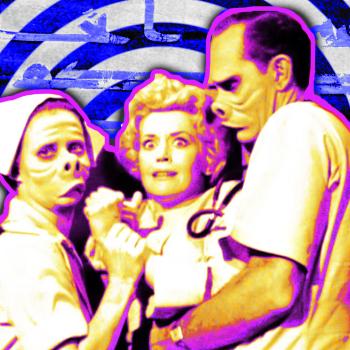Why are younger Americans more pro-life today? The crusading feminism that caught up so many Boomers has run out of momentum. Yet there are two other reasons: technology and the truth.
In 1973, Justice Harry Blackmun appealed to ignorance to justify the decision in Roe. At "this point in the development of man's knowledge," he wrote, we can "not resolve the difficult question of when life begins." If it could be determined that the fetus is a living human person, he said, then the case "collapses, for the fetus' right to life would then be guaranteed specifically by the [Fourteenth] Amendment."
Morally, this is an atrocious argument. We cannot determine conclusively whether or not abortion kills a human being—so we should allow it? Should we not go to extraordinary lengths to avoid what might take an innocent human life? It's also a tough argument to justify genetically and biologically, since in 1973 we already knew enough about conception and fetal development to conclude that the "fetus" is certainly alive, certainly human, and quite probably a "person" in every morally meaningful sense. Convenient though it is to believe otherwise, there is no magical transformation that occurs in between the womb and the world outside that suddenly confers "personhood" upon the child.
Yet ignorance on "the difficult question of when life begins" is an even tougher sell now. Today's younger generations have grown up with breathtaking images and videos of babies developing and maneuvering within the womb, media that are spread around the world and accessible to anyone with an internet connection. It's all but impossible to watch an ultrasound video of an abortion and not concede that it takes a life, and the more honest supporters of abortion "rights" will admit as much. I'll return to the logic of the pro-life argument in the next installment in this series, but the point for now is that medical research has provided us with a clearer understanding of fetal development and just how early the heart begins to beat (18 days from conception) and brain waves can be detected (6 weeks). Seven weeks from conception, the "fetal tissue" is sucking its thumb.
The new pro-life activists also use technology to record conversations with abortion hotlines, to videotape visits to abortion offices, and to show the moral corruption that follows when the sacredness of life is denied. Then they employ the power of the internet, new media, and social networking to spread the word. Although their methods are certainly open to critical assessment, ask yourself: Don't you wish that Live Action had sent a hidden camera into Kermit Gosnell's baby charnel house years ago?
What characterizes the imaging, video, and communications technologies that are turning the tide in the abortion debate is that they merely capture and disseminate the truth. Pro-abortion rhetoric is crashing against the shoals of reality. The womb is no longer a black box. The only way to countenance abortion is to shut our eyes to the very real miracle of life inside the womb. The more that open minds are exposed to the truth, the more they are prepared to defend life.
Two videos nicely capture the abortion battle amongst young people today. In the first, which shows demonstrations in support of Planned Parenthood, a young woman explains that abortion does not concern a baby, since "a baby is a fetus that has been born." (The magical transformation theory again.) Another young woman is perfectly willing to speak of aborting a baby, but "a baby's going to get in the way of the job I need to get." The schizophrenia of the pro-choice position, its callousness, its willful disregard for the interest of the child, is becoming more obvious everyday.
The second video shows the growing pro-life movement amongst college students. Of course, both videos come from pro-life sources, and the editing is strategic—yet the difference in atmospherics is true to my experience. Pro-choice demonstrations are fueled in large measure by hatred for pro-lifers, especially conservative Christians. "Keep your rosaries off my ovaries," the young people chant. Much of the rhetoric has the militant superficiality and recycled rebelliousness of an angry 1970s feminism. The pro-life demonstrations are more hopeful and idealistic, focused not on condemning a caricatured image of the opponent, but on saving innocent human life. As David French, a Patheos columnist, tells the college students, "You are a defender of the defenseless. You want the unwanted. This is who you are. This is what you do." This is much more appealing than "Abortion on demand and without apology."





